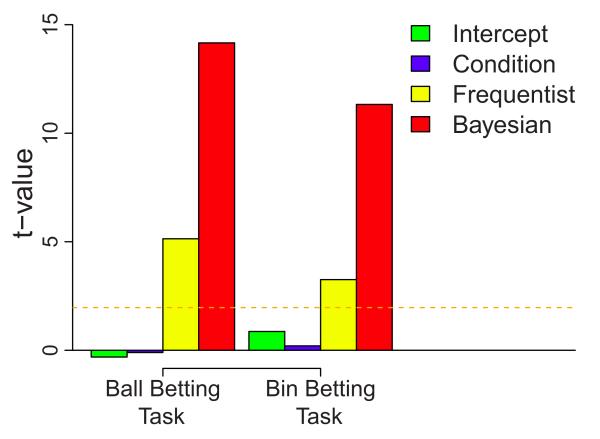Figure 3.
Participant beliefs as a function of outcome probabilities. The following beliefs were inferred from bets: the belief that a red ball would be drawn (ball betting task) or that the right bin was used to draw balls (bin betting task). Outcome probabilities were calculated based on only the observed balls (frequentist) or computed by optimally integrating prior information with observed frequencies (Bayesian). A linear model was fit to beliefs with the two types of probabilities entered simultaneously as explanatory variables, as well as a dummy variable for condition (whether the red ball/right bin was associated with the $1 payoff). Heights of the bars represent t values (relative effect size). Dotted line indicates significance at p = 0.05.

